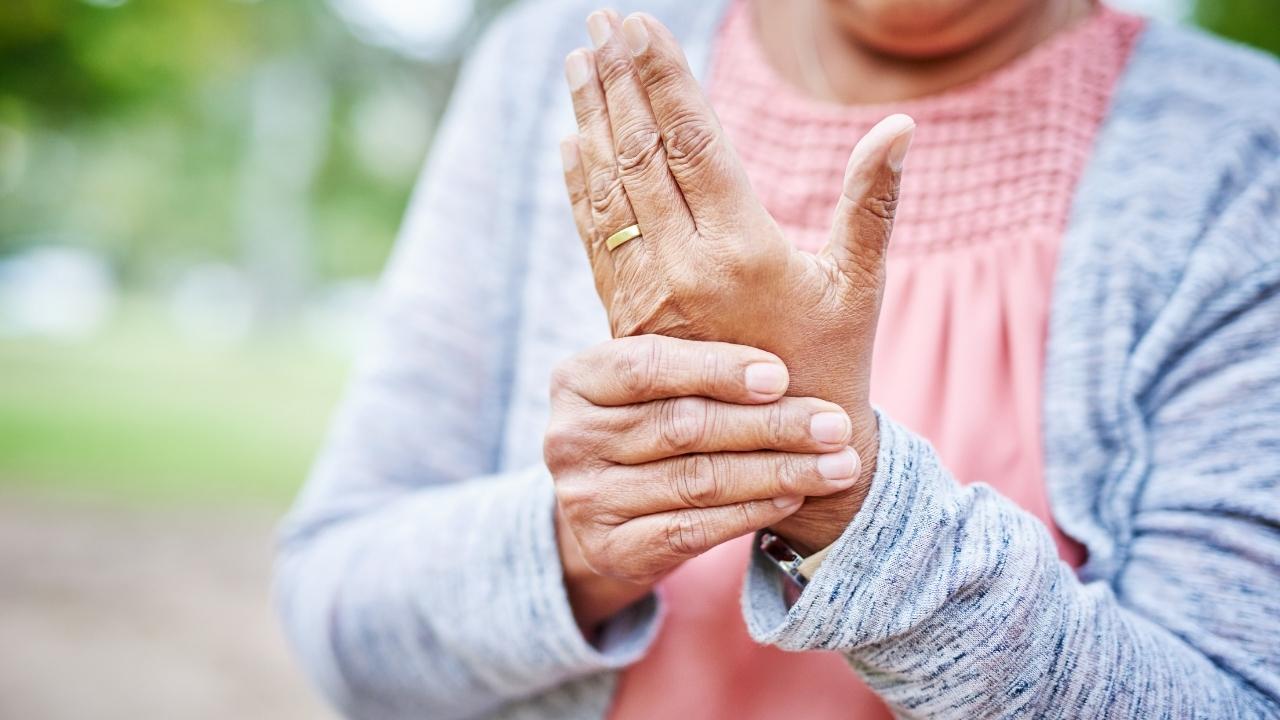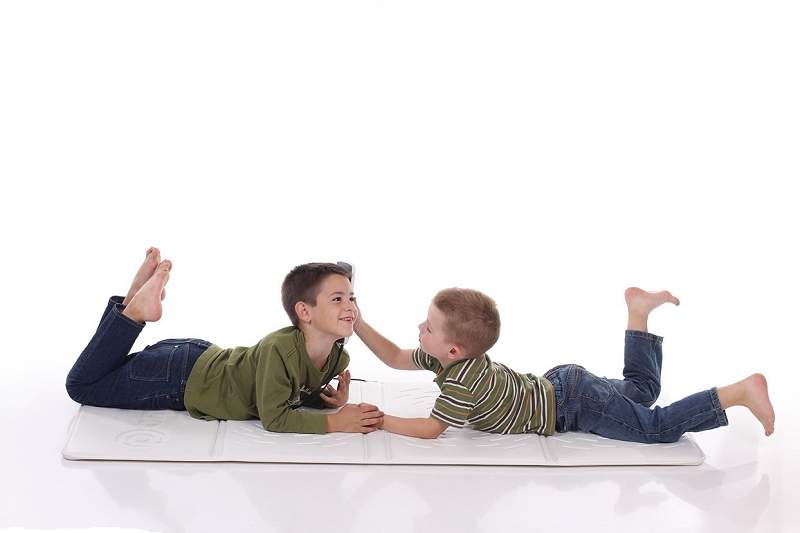
Cold laser therapy is a therapeutic modality approved by the FDA to stimulate healing. It is also known as Low-Level Laser Therapy (LLLT) because, unlike conventional lasers that use higher energy densities, LLLT uses low-power electromagnetic beams. This form of laser therapy, therefore, doesn’t heat the body tissues.
Low emitted diodes (LED) therapy, soft laser biostimulation, photo biostimulation, and Low-power laser therapy (LPLT) are some of the other names of cold laser therapy. (1)
Low-Level Laser Therapy utilizes light of a specific wavelength that interacts with the photosensitive elements of the cells. Akin to photosynthesis in plants, this light is converted into usable energy by the human cells, which in turn stimulates a bio-physiological reaction within the cell.
Cold laser therapy is being used in people with acute and chronic conditions of various etiologies. It helps to reduce spasms and swelling, provide relief from pain and improve functionality. It also promotes tissue healing in a wide range of musculoskeletal disorders, including arthritis. (2)
Pain and swelling of one or more joints, medically known as arthritis, is a common disorder affecting 58.5 million adults in the United States alone. It is particularly more common in adults with other comorbid conditions like obesity, diabetes, and heart disease. It can lead to poor physical function and can negatively impact the quality of life. (3)
There are over 100 different types of arthritis. Rheumatoid arthritis, osteoarthritis, gouty arthritis, lupus arthritis, and psoriatic arthritis are the most common forms.
The prevalence of diagnosed arthritis is expected to reach 78.4 million by the year 2040, of which an estimated 34.6 million adults are likely to report arthritis-associated activity limitation. (4) Living with arthritis isn’t easy or predictable, and each day may be better or worse than the previous. But various treatment alternatives can slow down the disease progression or prevent it from getting worse.
Laser treatment for joint pain is one such alternative that has been in use for over 40 years. Laser therapy offers both temporary pain relief as well as long-term healing. Most research that has been focused on chronic pain claims the effectiveness of red light laser therapy for arthritis. It has been shown to reduce inflammation, swelling, induce analgesia, and promote healing in musculoskeletal pathologies. (5)
Let’s take a closer look at how laser treatment for arthritis works, the benefits, drawbacks, and results of clinical studies. We will also discuss if you should be choosing laser therapy for arthritis.
How Does Laser Treatment Work For Arthritis?
Cold laser therapy uses a flashlight-like device that emits non-thermal photons of light. The device is placed directly over the affected joint for a few seconds to several minutes. The time duration depends on the size of the treatment area and the dosage of the laser unit.
The monochromatic light, between wavelengths of 660-905nm, can penetrate all three layers of your skin. Once the light passes through the skin layers and reaches the target area, the cells absorb it.
Inside your cells, the mitochondria or the cellular power plant, soak up the red or near-infrared light to release energy in the form of ATP (adenosine triphosphate). It also produces Nitric Oxide (NO) that causes the vessels to relax.
Light-mediated vasodilation brings in more blood, oxygen, and nutrients essential for accelerating tissue healing. It also increases Reactive oxygen species (ROS) that can fight off harmful oxygen-derived free radical molecules.
Photo-stimulation of the mitochondria results in increased levels of growth factors. This enhances the proliferation of several connective tissue elements like fibroblasts, endothelial cells, skin cells (keratinocytes), and lymphocytes.
The low doses of cold laser therapy increase collagen synthesis and stimulate the formation of new blood vessels. Both of these factors allow quick healing of wounds. Low-level light therapy has also demonstrated the ability to heal nerves, tendons, cartilage, and skin. (5)
The analgesic effect of cold laser therapy is beneficial in arthritis. Red light laser has been shown to inhibit Bradykinin, one of the most potent pain-producing molecules. Bradykinin directly stimulates our pain-sensitive nerve ending to evoke pain. (6)
Low-level laser therapy also acts as an anesthetic agent with short, medium, and long-term effects.
Fast-acting pain relief occurs within minutes of application, by blocking the pain pathways and releasing muscular contractions. Within a few hours to days, it decreases local inflammation and swelling. The long-term effects of cold laser therapy occur within a week and can last for months. This is a result of improved tissue healing. (5)
What Do The Clinical Studies Report On The Use Of LLLT In Arthritis?
A 2005 study reviewed more than six studies based on the use of LLT for Rheumatoid arthritis. The Cochrane review shows that LLLT decreased pain and morning stiffness more than placebo laser therapy. Morning stiffness is the slowness or difficulty in moving the joint when getting out of bed in the morning. Cold laser treatment for arthritis in hands also improved flexibility while decreasing the length of time of morning stiffness by 28 minutes. On a scale of 1 to 10, the arthritis-associated pain decreased by 1.10 points. (7)
A double-blind, randomized, placebo-controlled trial studied the effect of low-level laser treatment for osteoarthritis of the knee. Patients with mild to moderate knee osteoarthritis were included in the study. The treatment was delivered twice weekly for a duration of 4 weeks. Light of 830 nm wavelength was used with a power of 50mW. A significant improvement was found in the pain levels, pressure sensitivity, joint flexion, temperature, and circumference. The positive results obtained from cold laser therapy treatment persisted for 2 months post-therapy. (8)
Low power laser therapy was evaluated in animal models with arthritis induced by urate crystals (gouty arthritis). This 2004 study concluded that laser therapy has anti-inflammatory effects in urate injection-induced arthropathy in study subjects. (9)
A 2018 case report documented the use of LLLT, acupuncture, and herbal medicine in a 64 years old female with radiographically confirmed osteoarthritis. The patient reported pain and limited mobility in multiple joints and had attempted to manage her symptoms with drugs, lifestyle modification, and hands-on therapies. These interventions did not produce any clear improvements in her symptoms.
Over a period of 2 months, several LLLT treatments for arthritic joint pain were performed. There were major improvements in the range of movements. Her pain severity rating dropped to 3/10 from 9/10 after receiving Cold laser therapy treatment. (10)
A systematic review was conducted in 2000 that examined thirteen independent randomized controlled clinical trials based on the use of cold laser therapy for rheumatoid arthritis and osteoarthritis.
In patients with rheumatoid arthritis, LLLT reduced pain by 70% and morning stiffness by 27.5 minutes. The flexibility of the hand, as observed by touching the fingertips to the palm, increased by 1.3cm.
What Are The Cold Laser Therapy Benefits For Arthritis?

Apart from the many documented clinical improvements in arthritis, cold laser therapy also has the following benefits:
- Painless
- No surgery or recovery time needed
- Not-addictive
- FDA-approved safe procedure
What Are The Cold Laser Therapy Drawbacks?
Very few adverse effects are reported with the use of Cold laser therapy. Few of the side effects mentioned below are due to inappropriate handling of the device.
- May cause skin burn and eye damage
- May trigger seizures in photosensitive individuals
- Not covered by medical insurance
- It may take a while (a few months, even with as many as four treatment sessions each week) for it to be effective.
What Does The Treatment Feel Like?
There is very little to no sensation felt during cold laser therapy. It is usually mild, relaxing, and soothing. You may even fall asleep during the procedure.
On occasion, cold laser therapy can cause slight pain or temporarily worsen your condition. This is particularly true if you have a chronic problem. This can occur 12-24 hours after the laser therapy session and is because of the healing process initiated by the laser light. The pain is a normal reaction and will eventually subside.
Is Cold Laser Therapy For You?
- You should consider cold laser therapy if you suffer from acute and chronic musculoskeletal disorders such as osteoarthritis, rheumatoid arthritis, chronic regional pain syndrome, neck and back pain, fibromyalgia, tendinitis, lumbar or cervical radiculopathy, sprains, or strains.
- It can be used as an alternative to or complementary to conventional treatment modalities.
- You can also use laser therapy if you are not pregnant, do not have any form of cancer, and do not suffer from epilepsy.
The Takeaway
Cold laser treatments offer a positive influence on the clinical signs and prognostic parameters of both rheumatoid arthritis and osteoarthritis. There are very few studies on the use of red light therapy for arthritis caused by gout and lupus. Based on the available clinical data, cold laser therapy is effective in improving symptoms of rheumatoid arthritis like pain, morning stiffness, and joint flexibility. Low-level laser therapy is also beneficial in reducing pain levels, joint flexion, pressure sensitivity, temperature, and swelling in osteoarthritis.
References
1. Chung, Hoon et al. “The nuts and bolts of low-level laser (light) therapy.” Annals of biomedical engineering vol. 40,2 (2012): 516-33. doi:10.1007/s10439-011-0454-7
2. Mussttaf, Ruwaidah A et al. “Assessing the impact of low level laser therapy (LLLT) on biological systems: a review.” International journal of radiation biology vol. 95,2 (2019): 120-143. doi:10.1080/09553002.2019.1524944
3. Barbour, Kamil E et al. “Vital Signs: Prevalence of Doctor-Diagnosed Arthritis and Arthritis-Attributable Activity Limitation - United States, 2013-2015.” MMWR. Morbidity and mortality weekly report vol. 66,9 246-253. 10 Mar. 2017, doi:10.15585/mmwr.mm6609e1
4. Hootman, Jennifer M et al. “Updated Projected Prevalence of Self-Reported Doctor-Diagnosed Arthritis and Arthritis-Attributable Activity Limitation Among US Adults, 2015-2040.” Arthritis & rheumatology (Hoboken, N.J.) vol. 68,7 (2016): 1582-7. doi:10.1002/art.39692
5. Cotler, Howard B et al. “The Use of Low Level Laser Therapy (LLLT) For Musculoskeletal Pain.” MOJ orthopedics & rheumatology vol. 2,5 (2015): 00068
6. Gur, Ali. “Efficacy of 904 Nm Gallium Arsenide Low Level Laser Therapy in the Management of Chronic Myofascial Pain in the Neck: A Double-Blind and Randomize-Controlled Trial.” Lasers in Surgery and Medicine, vol. 35, 2004, pp. 229–35, https://doi.org/10.1002/1sm.20082.
7. Brosseau, Lucie, et al. “Low Level Laser Therapy (Classes I, II and III) for Treating Rheumatoid Arthritis.” Cochrane Database of Systematic Reviews, vol. 2010, no. 7, 2005. Crossref, https://doi.org/10.1002/14651858.cd002049.pub2.
8. Hegedus, Béla et al. “The effect of low-level laser in knee osteoarthritis: a double-blind, randomized, placebo-controlled trial.” Photomedicine and laser surgery vol. 27,4 (2009): 577-84. doi:10.1089/pho.2008.2297
9. Campana, Vilma R et al. “Laser therapy on arthritis induced by urate crystals.” Photomedicine and laser surgery vol. 22,6 (2004): 499-503. doi:10.1089/pho.2004.22.499
10. Dombrowski, Adam et al. “Treatment of Osteoarthritis With Low-level Laser Therapy, Acupuncture, and Herbal Therapy: A Case Report.” Integrative medicine (Encinitas, Calif.) vol. 17,2 (2018): 48-53.
11. Brosseau, L et al. “Low level laser therapy for osteoarthritis and rheumatoid arthritis: a metaanalysis.” The Journal of rheumatology vol. 27,8 (2000): 1961-9.



